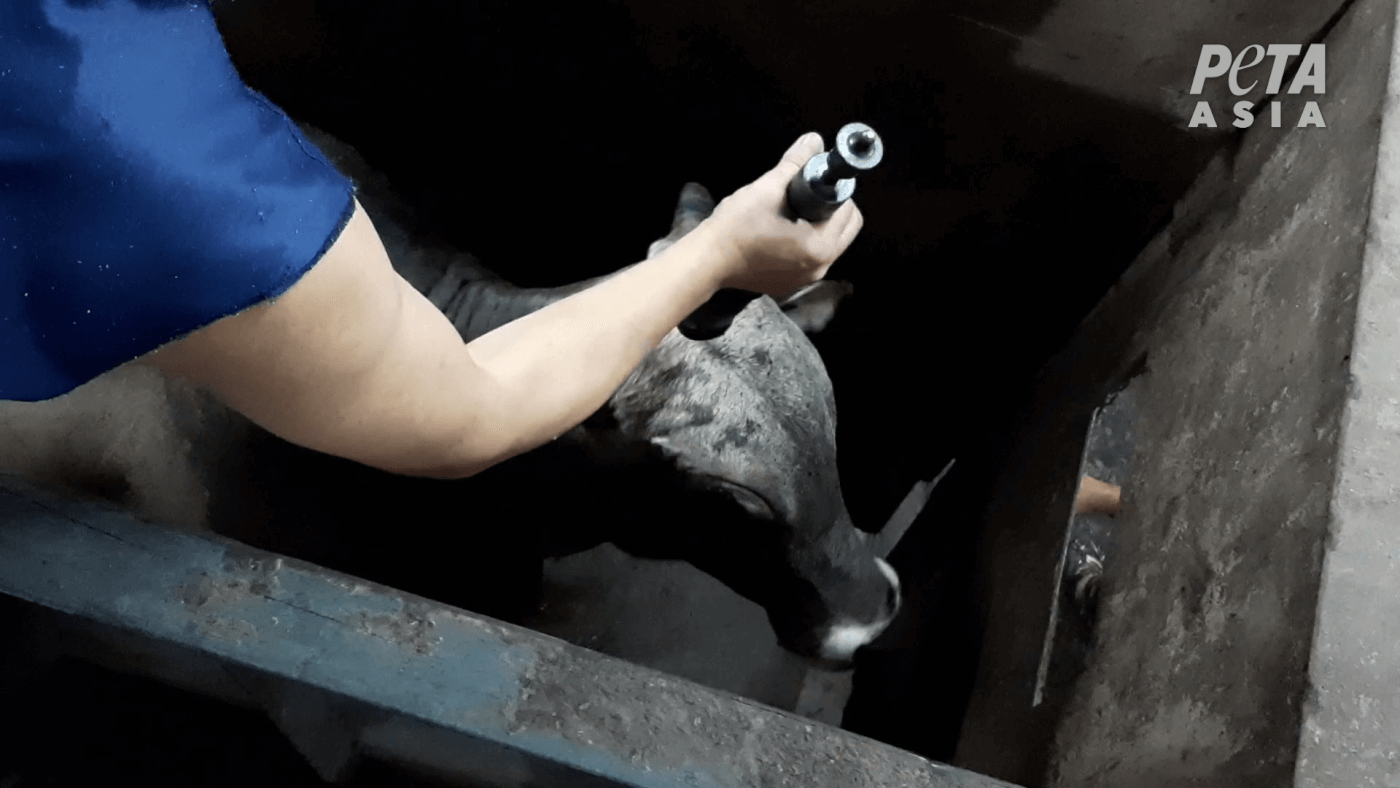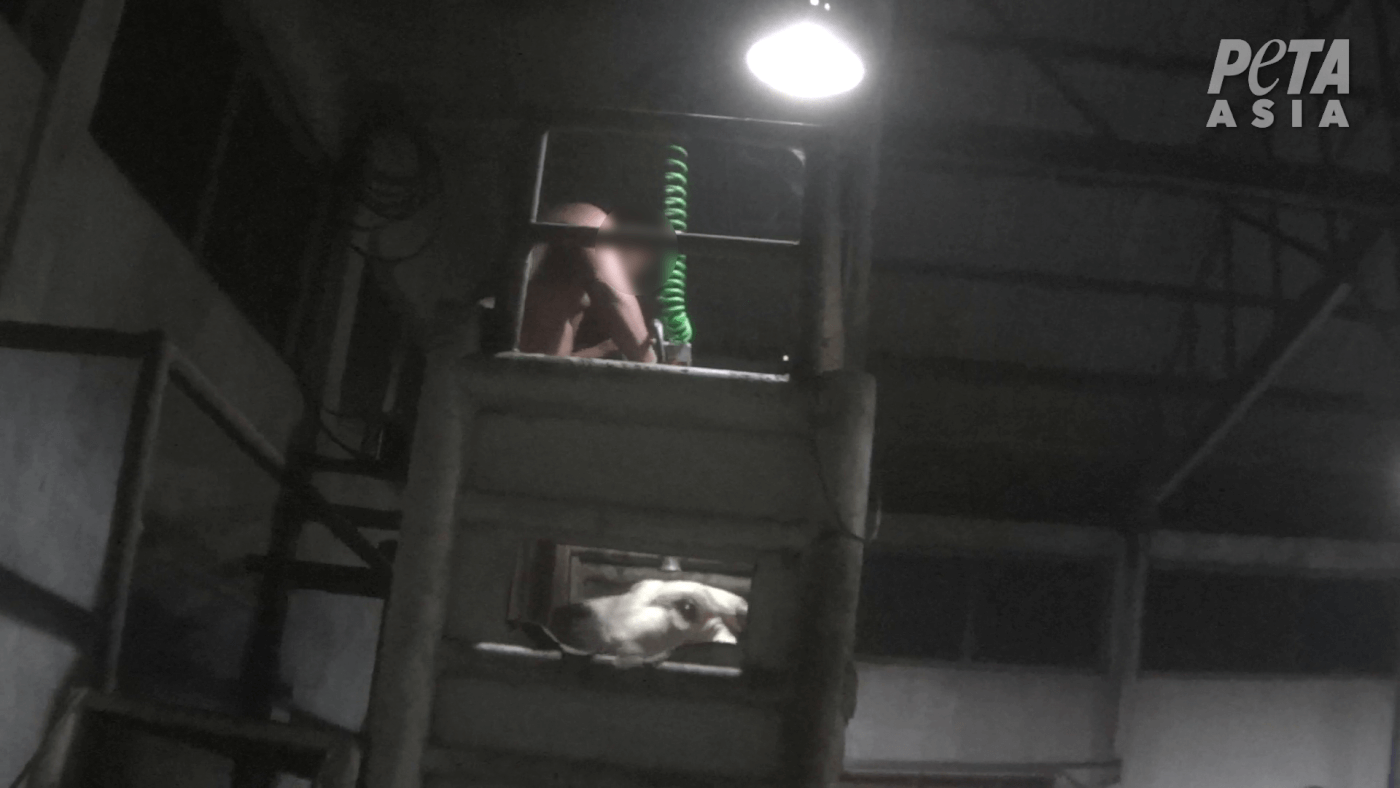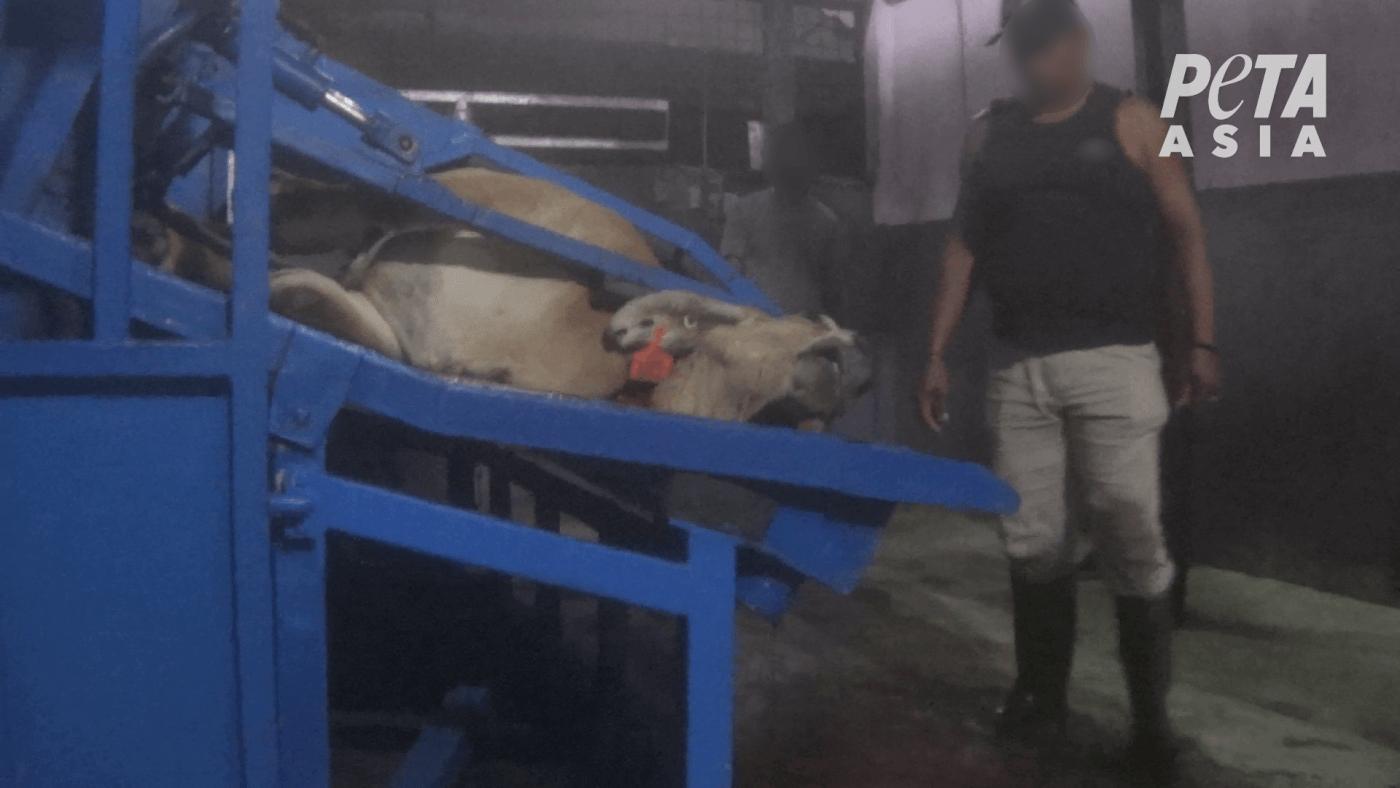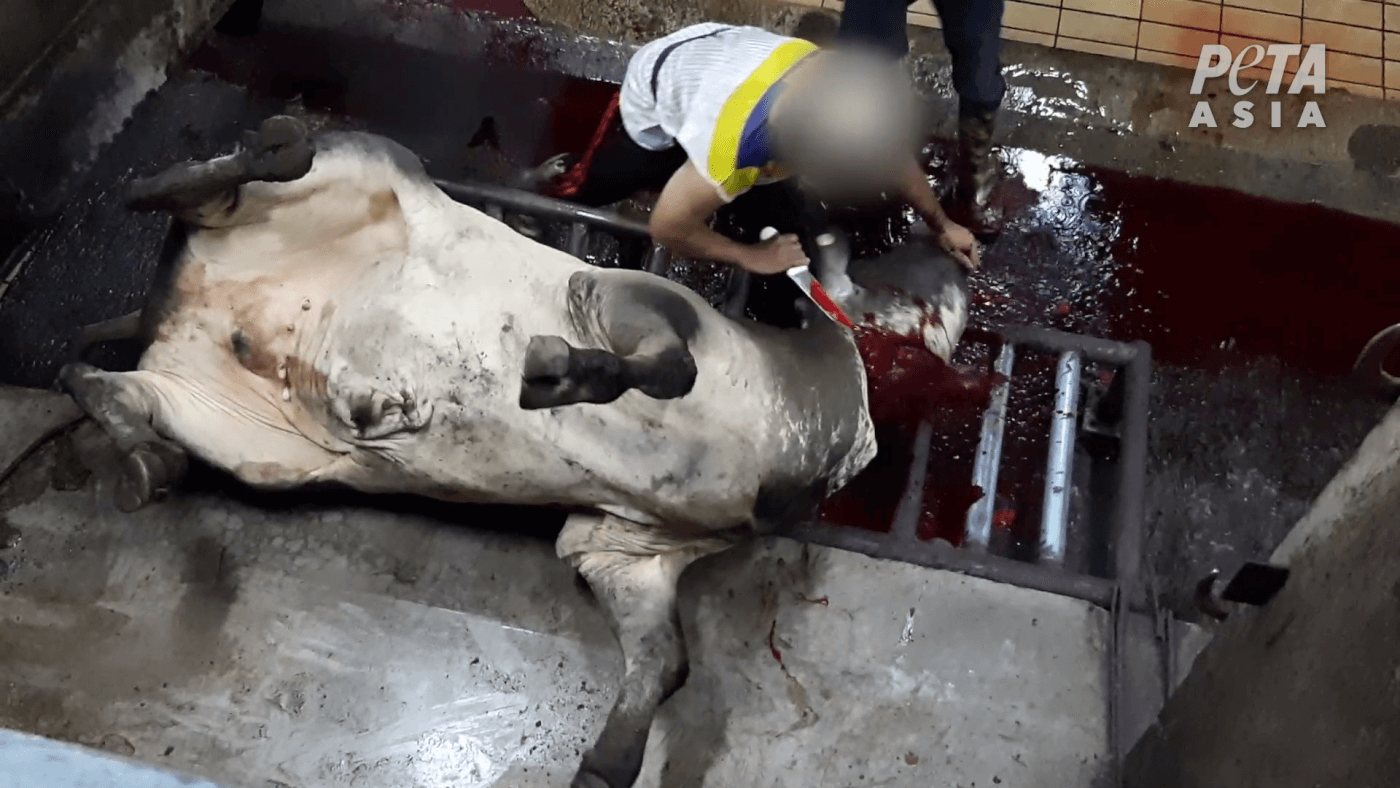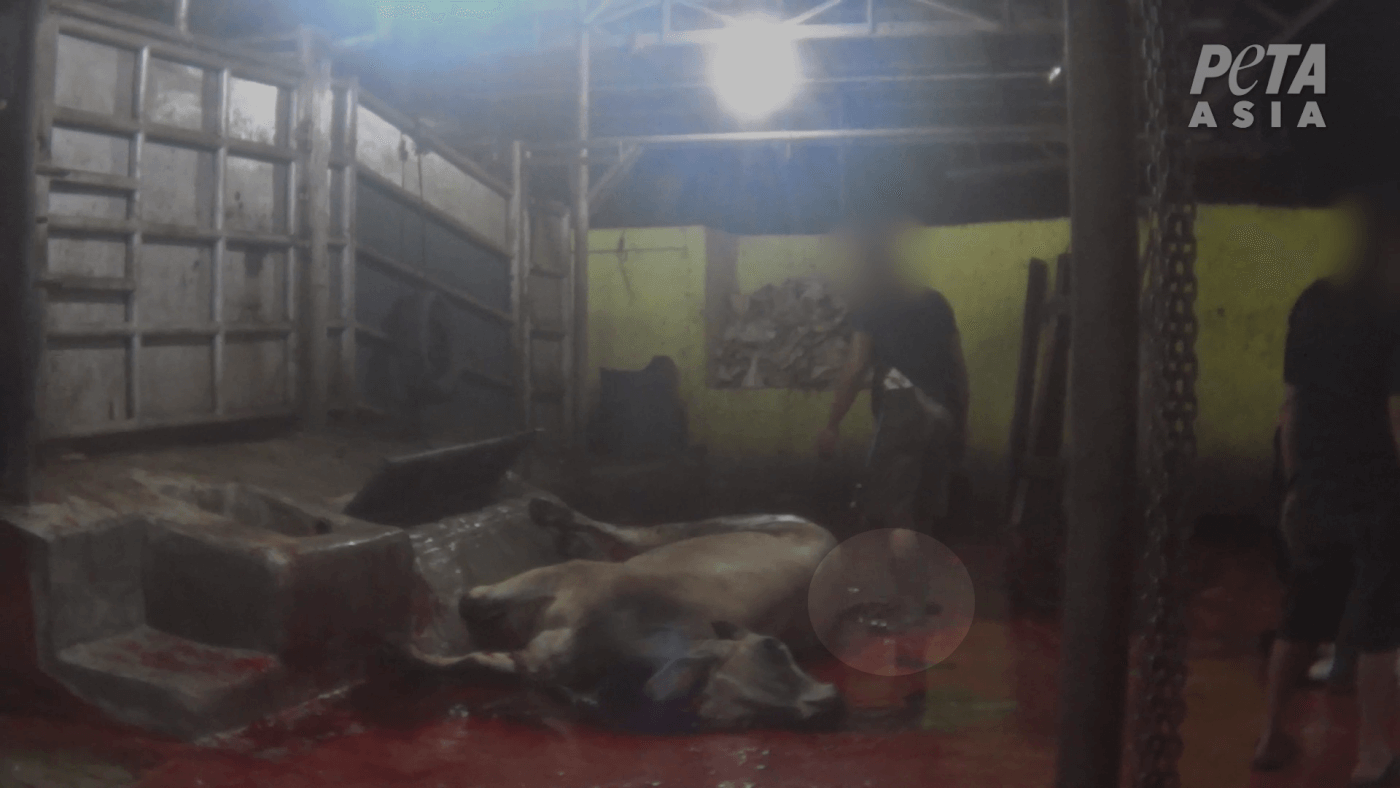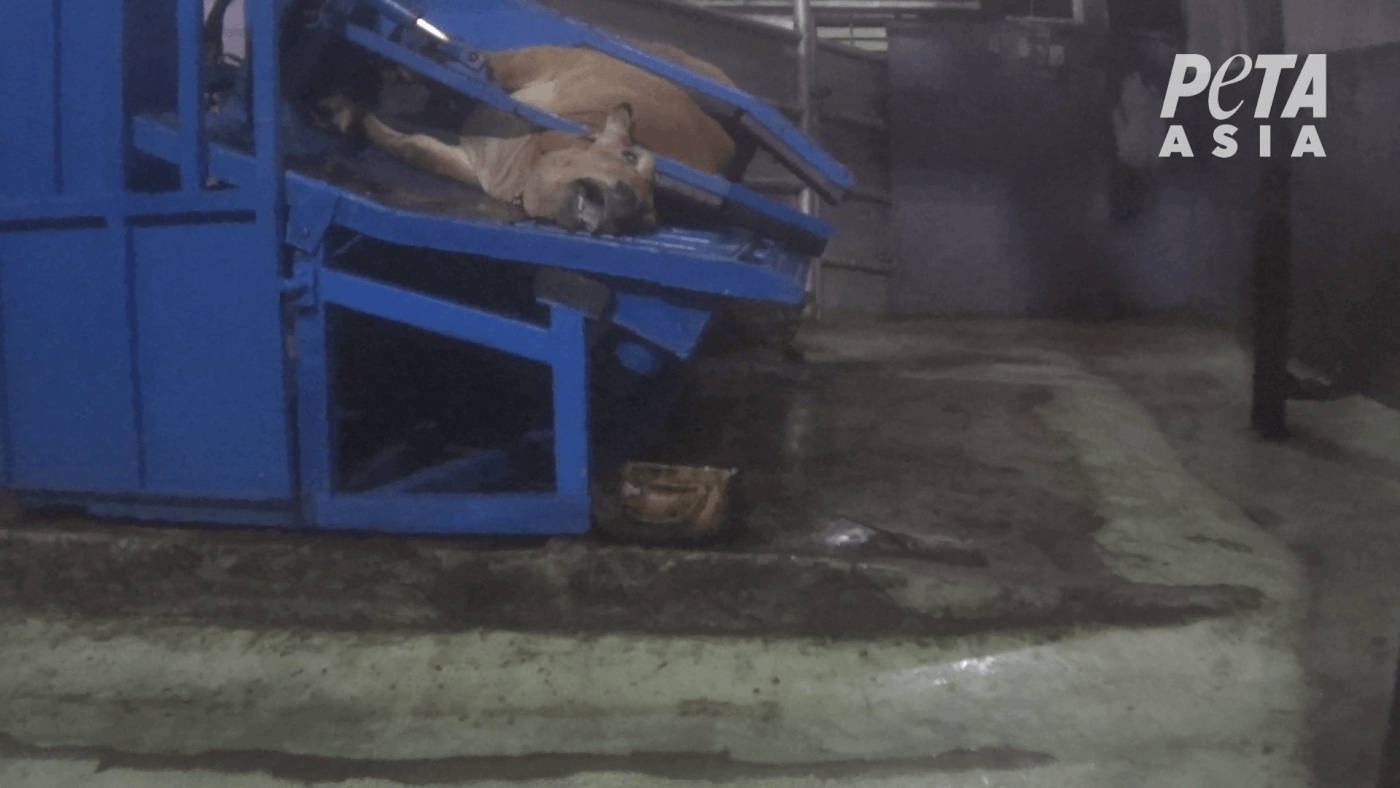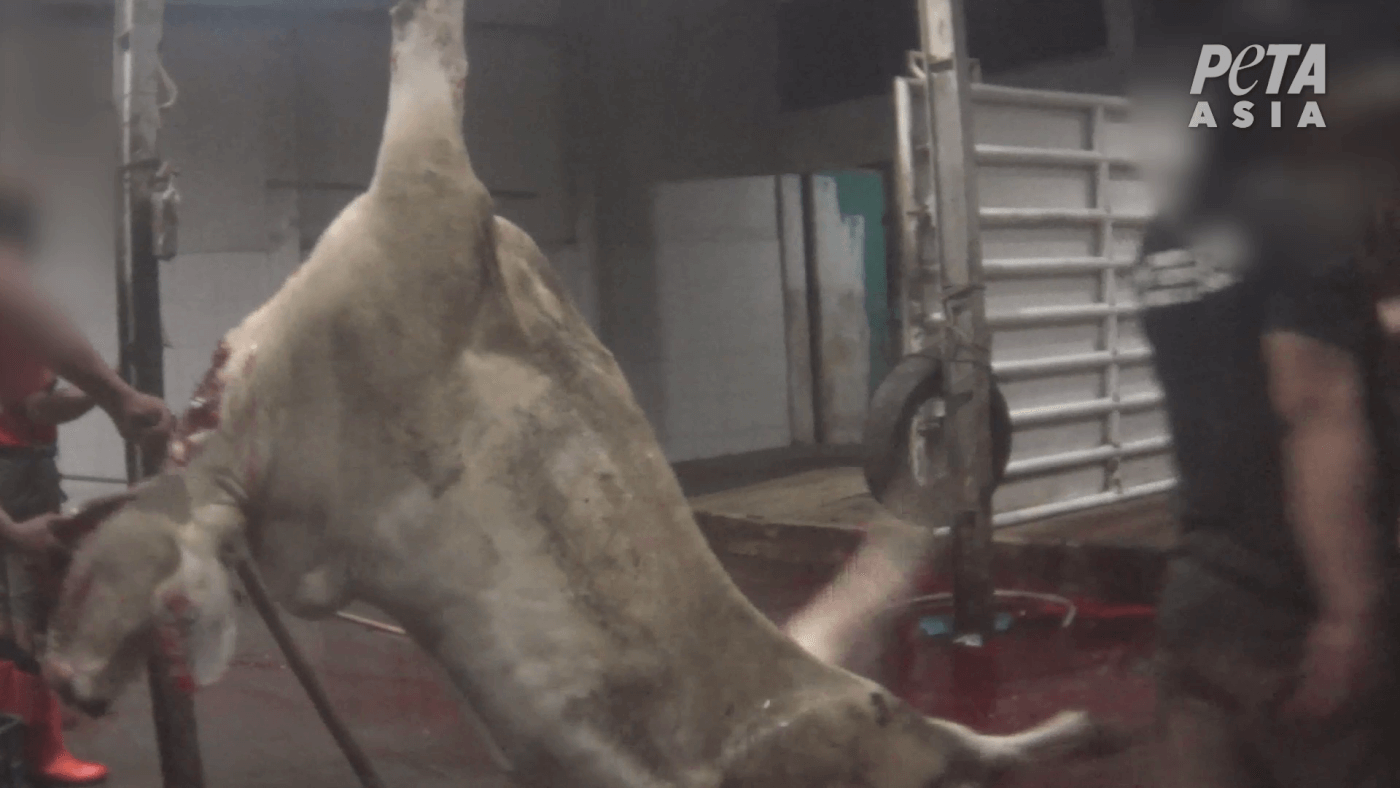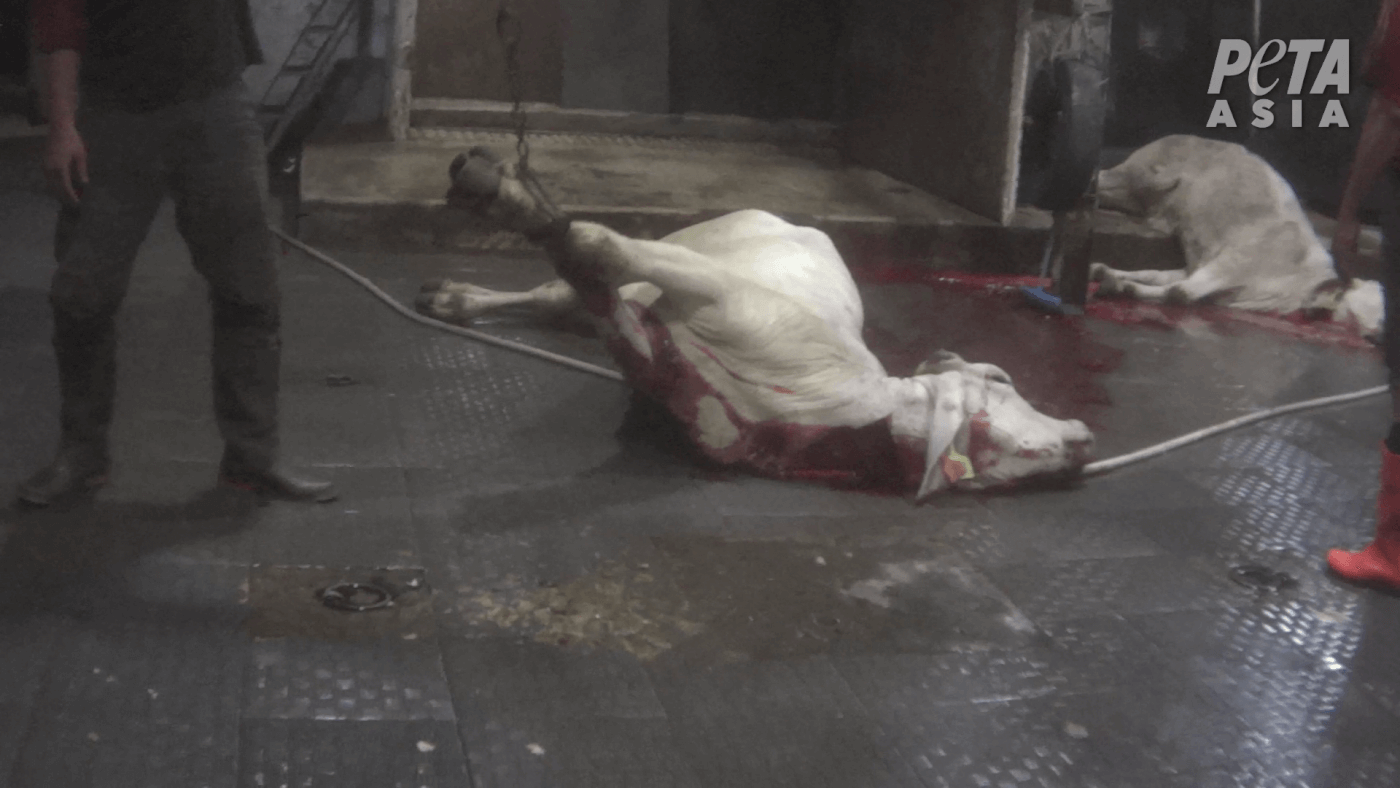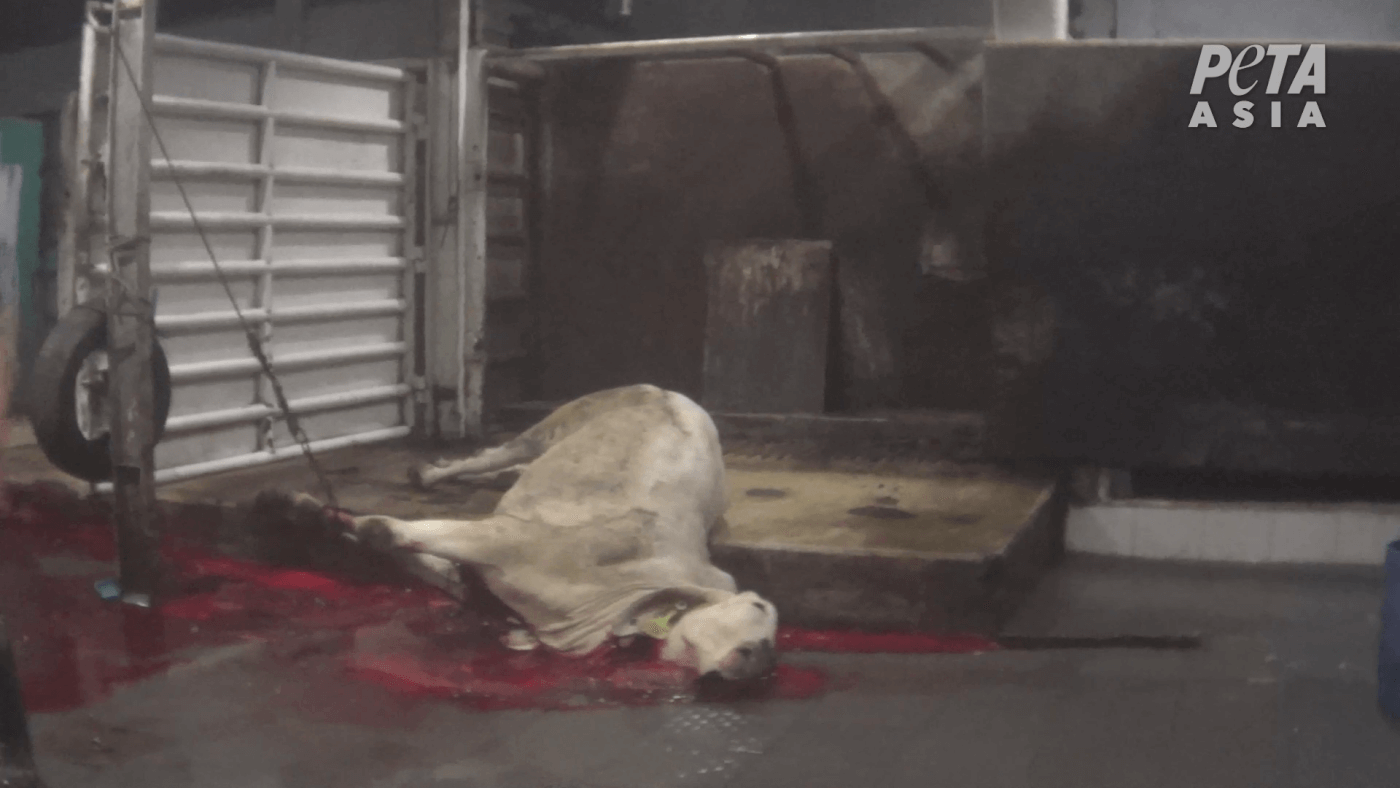BREAKING: Australian Cattle Butchered Alive in Indonesian Slaughterhouses
Update (April 10, 2024): When PETA Asia investigators went inside slaughterhouses in Indonesia in 2021, they found workers viciously killing Australian cattle there. The Australian meat industry “live exports”, or ships cows overseas to countries with weaker slaughterhouse regulations, such as Indonesia, to maximize profits. Indonesia has virtually no animal protection laws, so workers often kill cows with cheap, painful methods like those shown in the new footage, which are illegal in Australia. Despite Exporter Supply Chain Assurance System (ESCAS) measures put in place by the Australian government, new whistleblower footage obtained by PETA Asia confirms that Australian animals are still being savagely killed in Indonesia.
PETA Asia’s follow-up footage shows workers dragging and butchering cows who were still conscious and kicking as well as two cows with Australian ear tags thrashing on a slaughterhouse floor after workers sliced their throats open.
If the government won’t act to stop this cruelty to cows, what can you do as an individual?
Originally published November 6, 2021:
Chilling scenes of abuse of Australian animals have been documented at Indonesian slaughterhouses this year, prompting a fresh set of complaints against Australia’s live-export industry.
The footage is a harrowing glimpse into the trade that supplies flesh to dangerous wet markets and skin to the leather industry. Some of the facilities visited by PETA Asia investigators are even part of the Australian government’s Exporter Supply Chain Assurance System (ESCAS), dispelling all doubt about government inaction. The facilities were also halal-certified.
In the same month that this abuse occurred, Australian Livestock Exporters’ Council (ALEC) CEO Mark Harvey-Sutton expressed his “full confidence in the standards the Australian industry upholds.” Watch the footage and decide for yourself if you could say the same. If not, please stop buying leather right now!
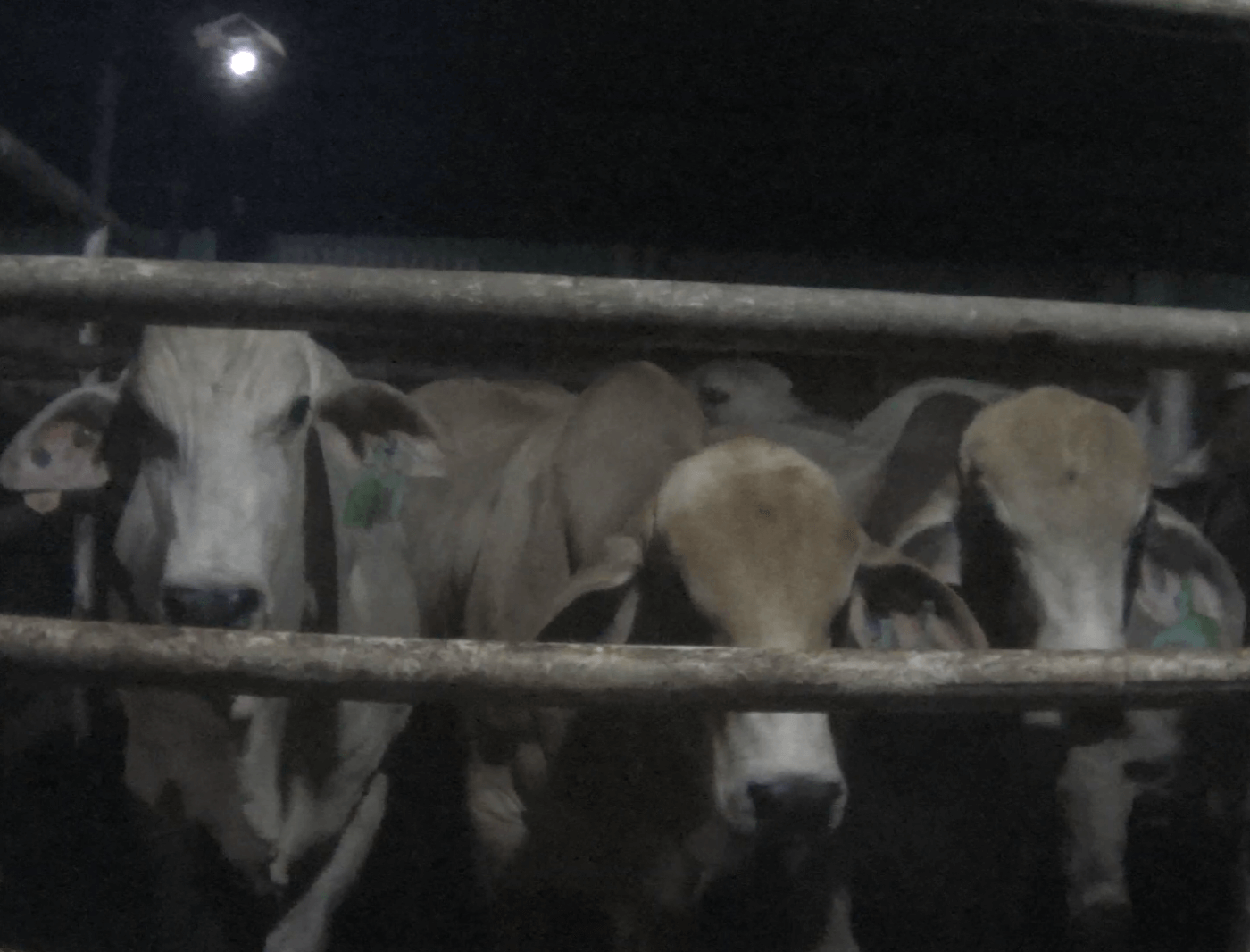
Botched Stunning or None at All
PETA Asia investigators visited seven randomly selected slaughterhouses in Indonesia in April and May 2021.
They found steers and bulls being forced into restraint boxes and shot in the head with captive-bolt guns, evidently in an attempt to stun them before their throats were cut. But cattle were often fully aware of what was happening to them. They slammed their bodies against the metal chute that they were trapped in, in a futile attempt to turn around and escape.
Workers repeatedly failed to stun cows properly. Clearly still conscious after being shot in the head, one steer was jabbed 64 times in the face and on his torso with a steel rod in an apparent attempt to force him to stand back up so a worker could shoot him again.
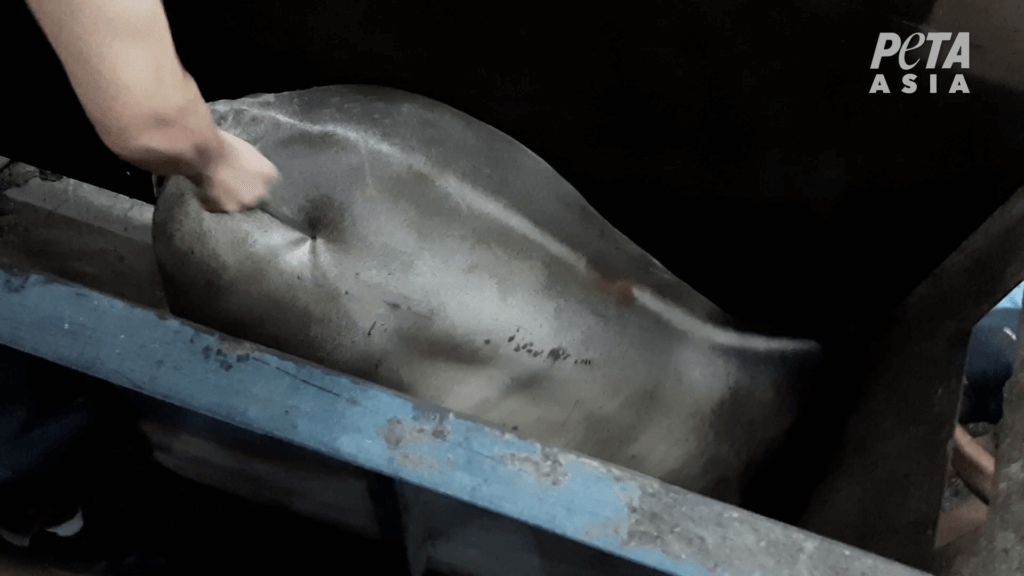
His tail was violently twisted again and again, until the worker reported that the bones in it were all broken. In a last-ditch attempt to move him, they yanked on his broken tail 12 times.
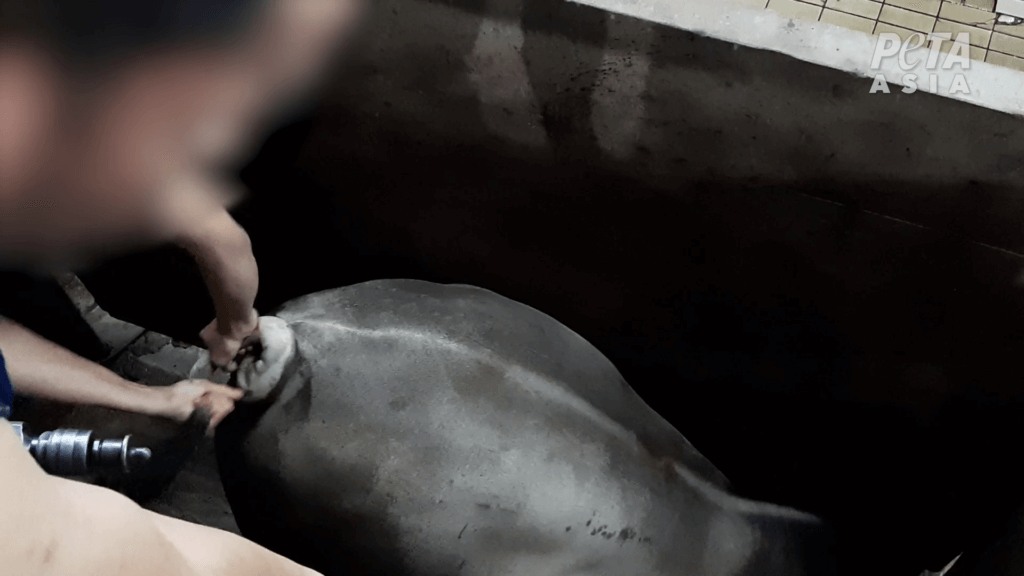
Then there were those for whom stunning wasn’t even attempted at all. Some cattle were simply physically restrained before their throats were slit—which, believe it or not, is a killing method approved by the Australian government.
ALEC boasts on its website that 95% of Australian cattle in Indonesia are now stunned prior to slaughter. But based on what investigators saw, that’s not the case.
Shoddy Stunning Attempts Left Animals Still Able to Feel Pain and Gasping for Air
Slaughterhouse workers viciously yanked or deliberately stepped on animals’ tails, apparently in a crude attempt to check for consciousness. Some cattle still kicked, but they were butchered with no further attempts at rendering them unconscious.
Steers who were still moving and whose heads still dangled by a strip of flesh after their throats had been slit were hung by the neck on metal hooks. Their legs continued to thrash as they were dragged across the bloody floor and then hoisted up.
Investigators saw animals blinking after their throats were cut, gasping for air as blood filled their airways. Some suffered this way for up to 12 minutes after being shot with a captive-bolt gun.
Monica K.H. Bando, a veterinarian with more than 13 years of clinical and research experience, said the footage captured by investigators depicted “egregious violations of acceptable animal welfare standards for livestock” including “[p]oorly designed facilities, unsanitary conditions, substandard handling, restraint methods that induce stress and distress, lack of stunning and ineffective stunning, and inhumane killing methods.”
10 Years of Wake-Up Calls
Workers told investigators that the cows being slaughtered came from Australia, and most wore Australian National Livestock Identification System ear tags.
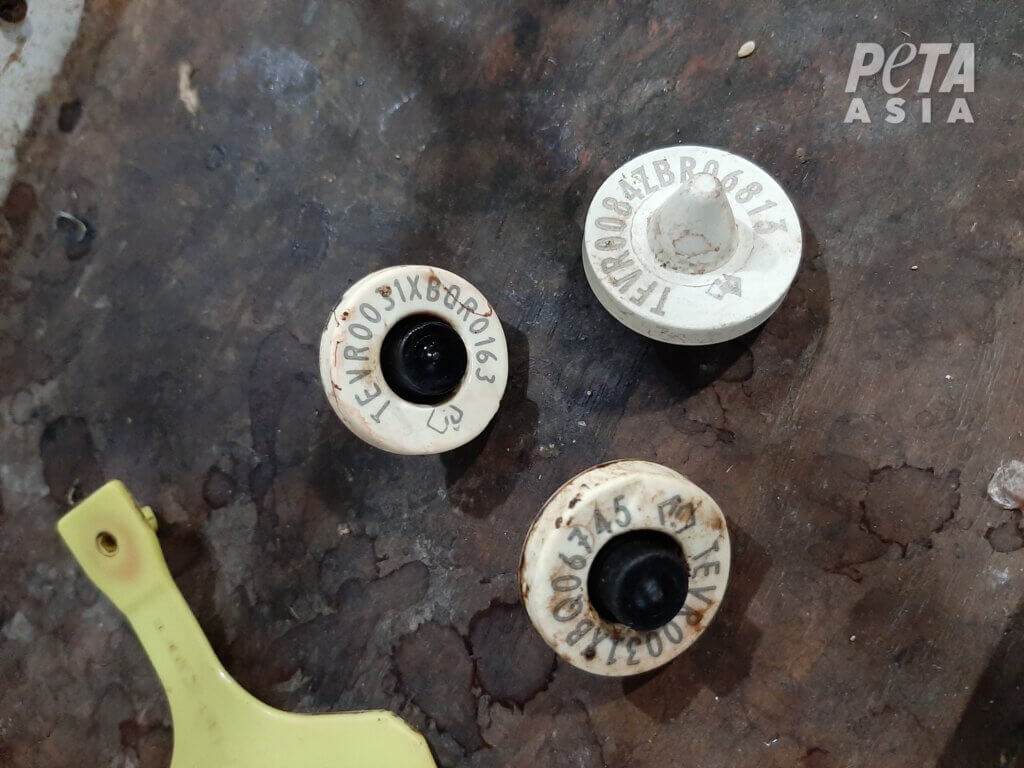
These are just a tiny percentage of the millions of animal victims of Australia’s live-export trade. Australia exported more than 1.8 million animals in 2020, and the vast majority of them were cattle.
It’s been a decade since cruelty in the live-export trade to Indonesia was exposed by Animals Australia on national TV in the program Four Corners, after which a traceability program—Export Supply Chain Assurance System—was put in place.
The programme hasn’t provided “assurance” of any kind. In fact, it’s been a colossal failure. It was supposed to stop this kind of cruelty, and clearly, it hasn’t. There have been 184 reports of non-compliance (just reports—the number of incidents would be far higher) since it was established.
When this latest footage was filmed, the Australian Department of Agriculture was still investigating cruelty complaints against Indonesian slaughterhouses made by Animals Australia in 2020.
Your Actions Matter
The Australian government should be preparing for a future without live exports, but it’s not. Every new exposé is “shocking” to those in power, yet the public isn’t surprised. When animals are crammed onto ships as though they were lifeless commodities and sold to be slaughtered, how can we expect them to be treated as if their pain mattered?
So we must look for a solution from the consumer perspective. If the government won’t act, what can you do as an individual?
The live-export industry is the meat and leather industries. And since the leather produced in Indonesia is exported globally, you may well be wearing or sitting on the skin of the same animals you’ve just watched writhe in pain. PETA Asia investigators found that the skins of some Australian cattle were sold to a fashion brand that exports leather shoes worldwide.
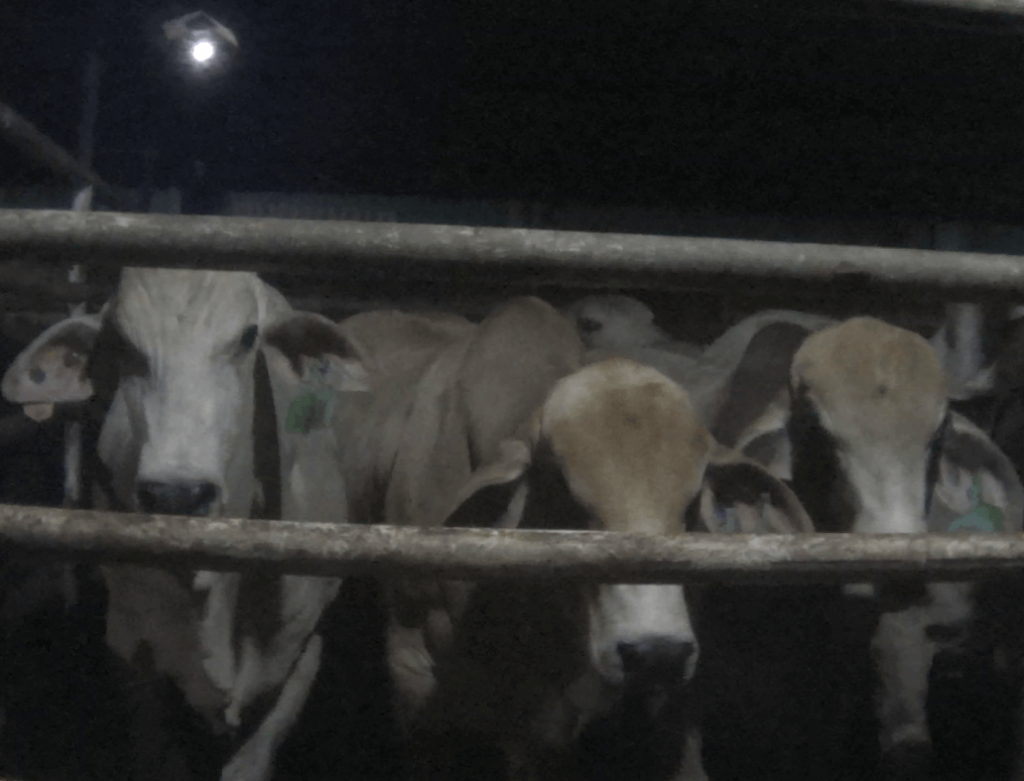
If you continue to buy the flesh or skin of animals, you send the message to producers that this industry is acceptable and has a sustainable future. You can change the market and the lives of animals every time you open your wallet. The time to take personal responsibility is now.
Help cows by never eating their flesh, drinking their milk, or buying leather.
Take action and tell Urban Outfitters to commit to only animal-free fashion in all of its brands.
